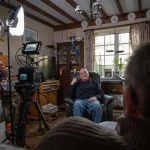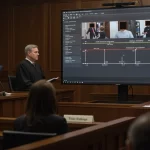Why "Day in the Life" Videos Are Powerful in Arbitration
Unlike traditional trials, arbitration relies heavily on documentary evidence and concise presentations. A well-crafted DITL video can:
- Humanize the client – Arbitrators, like jurors, respond to emotional storytelling. A video showing real struggles (e.g., difficulty bathing, and attending painful PT sessions) is far more compelling than medical records alone.
- Undermine defense minimization tactics – Insurers often argue that injuries aren’t as debilitating as claimed. Video evidence counters this by documenting limitations objectively.
- Increase settlement leverage – When defense counsel sees a strong DITL video, they’re more likely to negotiate favorably pre-arbitration.
- Streamline testimony – Instead of lengthy direct examinations, the video efficiently showcases the client’s daily challenges.
Best Practices for Filming an Effective DITL Video
1. Focus on Authenticity, Not Production Value
- Avoid overly polished edits—arbitrators may perceive them as staged.
- Use natural lighting and minimal cuts to maintain credibility.
2. Capture Key Activities
Film the client:
- Performing tasks they could do pre-accident (e.g., lifting groceries, playing with kids)
- Attending medical appointments or therapy
- Struggling with mobility, household chores, or personal care
3. Include Supporting Elements
- Medical professionals on camera (with consent) explaining limitations.
- Family members describing how the injury has changed the client’s life.
- Timestamps/logs to prove continuity and prevent claims of exaggeration.
4. Keep It Concise
- Ideal length: 5–10 minutes. Longer videos risk losing the arbitrator’s attention.
- Highlight the worst days (without misleading editing) to show true impact.

Presenting the Video in Arbitration: Tactical Considerations
1. Lay the Foundation Early
- Disclose the video in pre-arbitration submissions to avoid surprise objections.
- Pair it with an affidavit from the videographer or treating physician authenticating its accuracy.
2. Frame It Properly
- Opening statement: Preview the video’s purpose—e.g., “This video shows what Mr. Smith’s ‘recovery’ actually looks like.”
- Post-viewing: Tie specific moments to damages (e.g., “As you saw, Ms. Jones requires assistance to dress—this is why we’re seeking home care compensation.”)
3. Anticipate Defense Objections
Common challenges and rebuttals:
- “The video is prejudicial.” → Argue it’s probative—it directly illustrates claimed limitations.
- “It’s edited/manipulated.” → Provide raw footage or a filming log to verify authenticity.
- “It’s unnecessary; medical records suffice.” → Contrast clinical notes with real-world dysfunction shown in the video.
Ethical and Legal Considerations
- Avoid Misrepresentation: Never edit out moments where the client functions well; selectivity can backfire.
- Privacy Concerns: Obtain signed releases from all participants (including medical providers).
- State Rules: Check local arbitration guidelines—some jurisdictions require pre-approval for multimedia evidence.
Case Study: A DITL Video That Changed the Outcome
In a recent motor vehicle arbitration case, the insurer offered 150K pre-hearing. After submitting a DITL video showing the client’s agonizing morning routine (30 minutes just to get out of bed due to spinal injuries), the arbitrator awarded∗∗475K**—citing the video as "indisputable evidence of daily suffering."
Final Strategy Tip
This service is best for our Full Representation Service clients who want the fastest preparation and submission time possible. We will prepare and submit your application within 48 working hours of receiving the supporting documents requested We are commited to an integrated communication strategy and offer our clients an exclusive access, providing various information
- By IFEEDMEDIA




